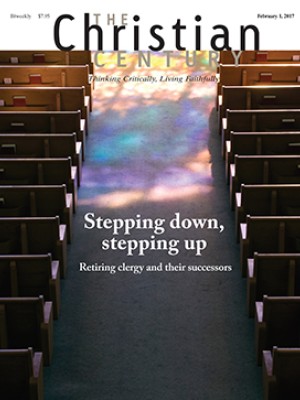New national monument in Utah and Nevada protects sacred lands
(The Christian Science Monitor) When President Obama established new national monuments in Utah and Nevada, he noted that the area is “profoundly sacred” for the Ute, Navajo, Hopi, and Zuni peoples.
At the start of his proclamation in late December protecting 1.35 million acres of land in the Four Corners region of southeastern Utah, Obama also called the distinctive twin buttes that dominate the landscape—Bears Ears in English—by their names in native languages: Hoon’Naqvut, Shash Jáa, Kwiyagatu Nukavachi, Ansh An Lashokdiwe.
Read our latest issue or browse back issues.
“The star-filled nights and natural quiet of the Bears Ears area transport visitors to an earlier eon,” Obama said. “Against an absolutely black night sky, our galaxy and others more distant leap into view. As one of the most intact and least roaded areas in the contiguous United States, Bears Ears has that rare and arresting quality of deafening silence.”
Obama has protected more land than any other president, designating more than 550 million acres of federal land and waters as national monuments.
“Communities have depended on the resources of the region for hundreds of generations,” Obama said of the Bears Ears region in his proclamation, noting its ecological importance. “Navajo refer to such places as Nahodishgish, or places to be left alone.”
Many Republican lawmakers—including most Utah politicians, who have for years supported a mix of development with partial protections—saw the president’s latest executive action as both sentimental and outrageous, “a slap in the face to the people of Utah,” said Rep. Jason Chaffetz (R., Utah). He had been working to draft a federal land use bill for the now-protected area.
But for many Native Americans, the president’s move represented the latest public victory in a growing effort to protect their traditional sacred lands—a struggle many say has also led them to reconnect with their religious traditions.
“We have always looked to Bears Ears as a place of refuge, as a place where we can gather herbs and medicinal plants, and a place of prayer and sacredness,” said Russell Begaye, president of the Navajo Nation. “These places—the rocks, the wind, the land—they are living, breathing things that deserve timely and lasting protection.”
Earlier in December, the Obama administration gave the Standing Rock Sioux, other tribes, and their allies a reprieve in their effort to halt the final stretch of the 1,200-mile Dakota Access Pipeline, which is slated to cross sacred sites near Cannon Ball, North Dakota, and a Missouri River reservoir, which is the reservation’s water source.
Many Native Americans see these efforts, along with others in the movement against climate change such as resistance to the Keystone XL Pipeline, as part of a resurgence of their collective spiritual traditions. This resurgence of native faith traditions, indigenous people say, dates to the American Indian Religious Freedom Act of 1978. Prior to that, many native practices and rituals had been prohibited.
“It’s really important to remember that it was only 1978 that we as indigenous people had the legal right to even pray in our way,” said Joye Braun, one of the organizers of opposition to the Dakota Access Pipeline. “Everything we do is in prayer here, and prayer is an essential part of revitalization of our cultures and our languages.”
The president’s proclamation creating the Bears Ears National Monument also established the first ever intertribal commission to provide “tribal expertise and traditional and historical knowledge” to help guide the federal agencies that manage the land. The area contains an estimated 100,000 archaeological sites, including ancient Pueblo cliff dwellings that are more than 3,500 years old.
Many rural residents, ranchers, and Republican lawmakers, however, see it as thwarting the development of energy sources and other commercial uses of the land.
“President Obama’s unilateral decision to invoke the Antiquities Act in Utah politicizes a long-simmering conflict,” Chaffetz said in a statement, vowing to work with the Trump administration to undo Obama’s actions. “After years of painstaking negotiations with a diverse coalition, Utah had a comprehensive bipartisan solution on the table that would have protected the Bears Ears and provided a balanced solution. Instead, the president’s midnight proclamation . . . disregarded the economic development and multiuse provisions necessary for a balanced compromise.”
The new Gold Butte National Monument in Nevada, also established in late December, has been a site of conflict for more than a decade. The now protected land lies near the site where rancher Cliven Bundy led an armed standoff with federal agents in 2014 after illegally grazing his cattle on federal land and incurring more than $1 million in fees and penalties. Armed antigovernment protesters led by his sons Ammon and Ryan Bundy were acquitted of wrongdoing in October after occupying a federal wildlife sanctuary in Oregon last winter.
A version of this article, which was edited on January 17, appears in the February 1 print edition under the title “New protected area in Utah includes land that’s sacred for Native Americans.”





